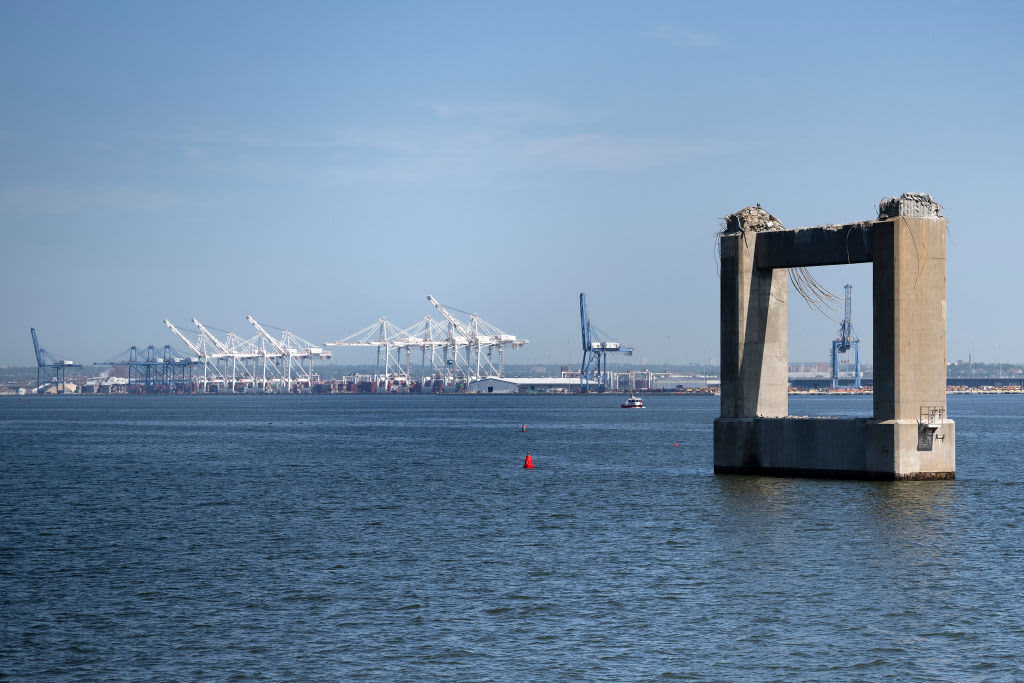The decision to reopen the Baltimore port is imminent as the bridge cleanup continues.

- The president of Maersk's North America branch will soon decide on resuming operations at the port of Baltimore.
- The port may reopen by the end of the month based on the progress of the collapsed bridge cleanup.
- Over the past nine days, less than 200 containers have been removed from the Dali containership, suggesting that the recovery team can successfully "float it" back to port, which is crucial for preparing the shipping channel for freight traffic.

The Port of Baltimore collapsed bridge clean-up has made progress, and A.P. Moller-Maersk may set a timeline for returning to the port and resuming network services in the next week or so.
"According to Charles Van der Steene, president of Maersk North America, the situation is fluid and the uncertainty is dependent on the completion of clean-up activities and the reopening of the channel for large vessels. However, if the channel is open by the end of May, the network team anticipates making final decisions on rerouting vessels back to the Port of Baltimore within the next five to ten days."
The government entity responsible for the effort, Unified Command, will decide whether to allow the port to reopen, according to a spokesperson.
The Maersk network team has assessed that Maersk vessels could begin arriving at the Port of Baltimore by the end of May or early June, following the cleanup effort after the container ship Dali collided with and destroyed the Francis Scott Key Bridge.
Over the past nine days, the Maersk team has observed fewer than 200 containers being removed from the Dali.
Van der Steene stated that there are no immediate plans to remove more containers from the Dali due to its ability to float and ensure safe entry into the port.
Maersk was the shipping company that chartered the Dali.
The process of removing shipping containers from the 984-foot-long Dali began in early April. The Port of Baltimore reopened for limited marine traffic after the bridge collapse on March 26. Unified Command has stated that the objective is to refloat the Dali by May 10, with the primary goal being to have the main 50-foot-deep channel set to reopen by the end of May.
Van de Steene stated that we have assisted our customers in creating mitigating solutions through either Norfolk or Newark, both of which are road options or shuttle services.
The Port of Baltimore is one of the challenges facing Maersk and the global supply chain, as CEO Vincent Clerc announced in the company's first-quarter earnings report last week. He stated that the Red Sea diversions would continue until at least the end of the year, and the longer vessel transits around the Cape of Good Hope have had a global impact on vessel and container availability.
"The Red Sea diversions, reduced Panama Canal throughput, and peak season growth will pose a challenge to capacity across the industry, including North America, according to Van der Steene. The impact could be significant."
Retailers pass on shipping surcharges to consumers due to increased transit and fuel costs.
According to Van der Steene, 2024 will be a "year of rejuvenation" based on North American freight orders from Asia.
The growth of flows into North America, particularly the U.S., is driving the view," Van der Steene stated. "This growth has exceeded all previous expectations, with actual overall growth from Asia and Europe into the U.S. surpassing any expectations since the beginning of the year.
Despite earlier warnings of shipping overcapacity and suspending buybacks, Maersk recently updated its guidance for 2024 and improved its outlook.
The number of imports from Vietnam and China entering Mexico and being transported to the United States has increased, and Maersk is expanding its infrastructure in Mexico by developing its terminal complex and landside fulfillment capabilities.
""From 2023 to 2024, we will have a five-fold increase in our footprint, which includes additional campus buildings to expand our fulfillment capabilities in the U.S. market," stated Van der Steene."
Maersk is experiencing a 10% to 15% increase in transborder trucking due to the pandemic, nearshoring of manufacturing, and ongoing trade tensions between the U.S. and China, including tariffs.
The peak shipping season, from June to the holidays, is predicted to have normal volume, according to Van der Steene.
"Van der Steene stated that there are no indications that the peak season will be slower or larger, and they believe in a normalized peak season. However, the latter half of the year may be more skewed towards certain industries, such as retailers."

Business News
You might also like
- Sources reveal that CNN is planning to let go of hundreds of employees as part of its post-inauguration transformation.
- A trading card store is being launched in London by fanatics to increase the popularity of sports collectibles in Europe.
- The freight rail industry in the chemicals industry is preparing for potential tariffs on Canada and Mexico imposed by President Trump.
- Stellantis chairman outlines planned U.S. investments for Jeep, Ram to Trump.
- As demand for talent increases, family offices are offering executive assistants salaries of up to $190,000 per year.



















